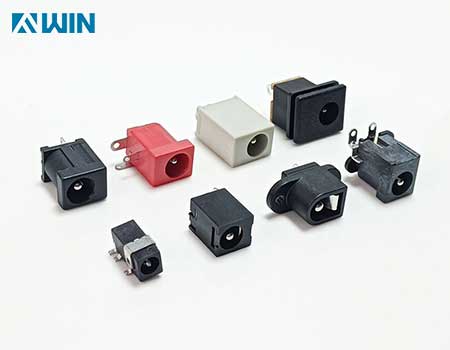A DC jack is a type of electrical connector used for delivering direct current (DC) power to devices. It is commonly used in applications like powering electronic equipment, charging devices, and connecting power supplies. The DC jack typically features two parts: the central pin (also called the tip) and the outer sleeve, which are connected to the positive and negative terminals of the power supply, respectively.

In most DC jacks, there is a clear distinction between the positive and negative terminals, which ensures proper polarity for the power connection. Proper polarity is essential for the functioning of electronic devices, as incorrect polarity can lead to malfunction, damage to the device, or even fire hazards.
Positive (Tip): The tip of the DC jack is usually the positive terminal. This is the part of the jack where the power supply's positive voltage (often denoted as “+”) is connected. When connecting a DC power supply, the center pin (tip) should always be connected to the positive terminal of the device being powered.
Negative (Sleeve): The outer sleeve of the DC jack is typically the negative terminal. It is connected to the ground or common return path of the electrical circuit, often marked as “-”. The negative terminal serves as the return path for the current, completing the circuit and allowing electricity to flow smoothly.
The specific arrangement of positive and negative in a DC jack will depend on the manufacturer and application, but the general rule of thumb is that the center pin (tip) is positive, and the outer sleeve (shield) is negative. However, it's essential to verify the correct polarity by checking the datasheet or documentation for the specific power connector or device to avoid any issues.
DC jacks are available in several configurations, including different sizes, shapes, and orientations. The most common types include:
Barrel Jack (or Barrel Connector): The most prevalent type of DC jack. It consists of a cylindrical shape where the central pin (tip) is inserted into the center of the barrel, and the outer sleeve wraps around the outside of the jack.
Coaxial DC Jack: This type features a coaxial design with an inner and outer conductor, where the inner conductor corresponds to the positive terminal, and the outer conductor serves as the negative.
XLR DC Jack: Though less common, XLR-style connectors may also feature DC power terminals with distinct positive and negative connections, typically used in professional audio equipment.
Mini Jack / Micro Jack: Smaller versions of the standard DC barrel connector, often used in portable or low-power devices. They also have a positive center pin and a negative outer sleeve.
Correct polarity is critical for the proper operation of any electrical or electronic device. When a DC jack is used to power a device, the device's internal components—such as microcontrollers, sensors, or chips—are designed to work with a specific polarity. Reversing the connections can cause malfunction or permanent damage.
For example, in some cases, reversed polarity can cause:
Damage to internal components: Many devices have sensitive circuits that are designed to handle only a specific voltage and polarity. Reversing the connections can cause damage to components like capacitors, resistors, and transistors.
Short circuits: Incorrect polarity can sometimes result in short circuits that might damage both the power supply and the device being powered.
Overheating or fire risk: Incorrect polarity, especially when used with high-power devices, can cause the device to overheat, increasing the risk of fire or explosion.
Failure to power on: Some devices may not function at all if the polarity is reversed, as they are designed to operate with a specific positive and negative connection.
The polarity of a DC jack is often marked for easy identification:
Labeling: Many DC jacks and their corresponding connectors have clear markings, such as a “+” symbol next to the tip or an engraving indicating the positive connection. Similarly, the sleeve may have a “-” symbol to indicate the negative terminal.
Color coding: Some connectors have color-coding schemes. For instance, red wires often indicate the positive terminal, and black wires are typically used for the negative terminal.
Multimeter: If the polarity is not marked, you can use a multimeter to verify the positive and negative terminals. Set the multimeter to measure DC voltage, place the probes on the terminals of the DC jack, and check the voltage reading. A positive reading indicates the correct polarity for the device.
In summary, the positive and negative terminals of a DC jack are critical for ensuring the correct operation of electronic devices. The tip (center pin) typically carries the positive (+) voltage, while the outer sleeve carries the negative (-) or ground. Ensuring that these connections are made correctly is essential for preventing damage, ensuring efficient power delivery, and maintaining the safety of electronic systems.
When using a DC jack, always verify the correct polarity to avoid issues. Whether you are designing a PCB, selecting a power supply, or simply connecting devices, understanding the positive and negative connections of the DC jack is fundamental to successful and safe operation.
Contact: Ms Bella
Phone: +86-15999819066
Tel: +86-0769-89615395
Email: Bella@fvwin.com
Add: No 25, Xinfeng East Road, Shijie Town, Dongguan, GD, CN, 523000
We chat
